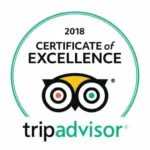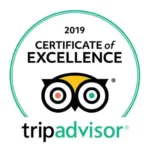Unlock the Secrets of Angkor: The Hidden Tour That Will Leave You in Awe!
Our famous Banteay Srei and the Grand Circuit Heritage Tour
As I walked into Angkor Wat, the sky turned orange and pink at sunrise. The temple’s tall spires came out of the mist. I felt amazed, knowing I was going on a journey through time.
We started the Angkor Wat Sunrise tour at 4:30 AM. Our guide showed us the secrets of ancient Khmer architecture. We saw the main temple and the hidden Banteay Srei, known as the “Citadel of Women” for its detailed carvings.
During the day, we explored Siem Reap’s culture. We saw the mysterious Bayon Temple and the jungle-covered Beng Melea ruins. Each place showed us the beauty of Angkor temples. As the sun set, I thought about the amazing things we saw.
Key Takeaways
- Angkor Wat is a UNESCO World Heritage Site with stunning ancient Khmer architecture
- The Grand Circuit Tour offers a comprehensive exploration of the Angkor temples
- Banteay Srei, known for its intricate carvings, is a must-visit hidden gem
- Siem Reap serves as the gateway to the Angkor archaeological park
- Early morning tours provide magical sunrise views of Angkor Wat
- The Angkor complex showcases the rich cultural heritage of Cambodia
The Mystical Allure of Angkor Wat
I’m in awe as I stand before the magnificent Angkor Wat temple. This incredible structure is the crown jewel of the Khmer empire. It shows their amazing skill in building.
It’s the world’s largest religious monument. It covers 400 square kilometers and has over 100 temples and ruins.
A UNESCO World Heritage Site
Angkor Wat got the UNESCO World Heritage status for its historical importance. It was built in the 12th century. This Hindu-turned-Buddhist temple complex is a top example of Khmer architecture.
Its design shows Hindu mythology. The central towers stand for Mount Meru, the cosmic center in Hindu beliefs.
Architectural Marvels of the Khmer Empire
The temple’s grandeur is clear from its huge moat and outer wall over 3.6 kilometers long. Inside, I see detailed bas-reliefs of scenes from Hindu epics and history. These carvings show the skill of Khmer artisans.
Spiritual Significance and Religious Symbolism
Angkor Wat is more than a beautiful temple; it’s a spiritual journey. The temple’s design mirrors the Hindu universe. Its five towers represent the five peaks of Mount Meru.
As I explore, I feel a deep connection to the religious sites that have lasted for centuries. They link the earthly and divine realms.
For those wanting to explore this ancient wonder, a 2-day tour costs about $108. It includes seeing the temple at sunrise and sunset. It’s a small price for an unforgettable experience at one of humanity’s greatest achievements.
Unveiling the Hidden Gems – Banteay Srei and the Grand Circuit Tour
I found the Grand Circuit tour, a journey to Angkor’s hidden treasures. It takes you to five amazing sites, each with its own charm. We start early to beat the crowds and enjoy the magic of these ancient places.
The Banteay Srei temple was a big highlight for me. Its pink sandstone carvings were amazing. Then, I went up the Pre Rup temple, a three-tiered mountain with great views.
The East Mebon temple had stunning elephant sculptures. This showed the skill of Khmer artists. Ta Som temple had tree roots covering its structures and detailed carvings.
The Neak Pean temple was peaceful, set on an artificial island. My trip ended at Preah Khan temple, a huge complex that felt like a stone maze.
The Grand Circuit tour takes about 2 days and runs all year. Wear comfy clothes that cover knees and shoulders to show respect. Bring your camera for endless photo chances!
- Tour highlights: Banteay Srei, Pre Rup, East Mebon, Ta Som, Neak Pean, Preah Khan temples
- Duration: 2 days
- Best time to visit: Year-round
- Dress code: Cover knees and shoulders
This tour showed me Angkor’s hidden wonders, beyond Angkor Wat. It was a journey I’ll always remember, full of amazing architecture and culture.
The Art of Temple Exploration: Best Practices and Etiquette
Exploring temples in Cambodia is a special journey. It’s important to respect local customs. This makes the visit better for everyone.
When you go to sacred temples, dress modestly. I wear clothes that cover my shoulders and knees. This shows respect.
Dressing Appropriately for Sacred Sites
Wearing modest clothes is a must for temple visits. I choose loose pants or skirts and shirts that cover my shoulders. This simple act shows respect for the temples.
Respecting Local Customs and Traditions
At temples, I follow the paths and don’t touch the structures. This helps keep the temples safe and shows respect. I also take off my shoes before going inside, as is the custom.
Photography Tips for Capturing Angkor’s Beauty
Photographing temples needs thought and skill. Going to Angkor Wat at sunrise is great because it’s less crowded. Using wide-angle lenses captures the temples’ size.
Zooming in shows the detailed carvings. Trying different angles highlights the light and shadows. This brings the temples to life.
Temple exploring is hard work. I drink lots of water and protect myself from the sun. By doing this, I have a respectful and fun visit. I also help keep Cambodia’s culture alive.
Beyond the Temples: Immersing in Cambodian Culture
I love walking through Siem Reap’s Old Market. It’s full of bright colors, strong smells, and lots of life. I see local crafts, spices, and fresh food that show off Cambodian culture.
Then, I try a fish massage. Tiny fish eat on my feet, giving me a funny but nice feeling. It’s a fun thing to do in Siem Reap and a great way to relax.
Next, I visit a beautiful pagoda to learn about Cambodian Buddhism. It’s quiet and peaceful. I see monks and even get a blessing. This helps me understand the local culture better.
Seeing traditional Khmer dance is a must. The dancers move beautifully, wear cool costumes, and tell stories with their dance. It’s amazing to watch and shows off Cambodia’s art.
Eating local food is a big part of my trip. I enjoy special noodles and try yummy cupcakes in Prei Dak village. Then, I take a cooking class. It’s fun to learn how to make real Cambodian dishes.
Planning Your Angkor Adventure: Practical Tips and Considerations
I’m excited to share my insights on planning an unforgettable trip to the Angkor Archaeological Park. This vast complex spans over 400 square kilometers. It offers a journey through time that’s sure to leave you awe-struck. Let’s dive into the essentials for your Angkor adventure!
Best Time to Visit Angkor Archaeological Park
The best time to visit Angkor Wat is from November to February. You’ll enjoy cooler temperatures and minimal rainfall, perfect for exploring the temples. However, this is also peak season, with over 2 million visitors flocking to Siem Reap annually.
For a quieter experience, consider visiting during the rainy season from June to September. You’ll find lower hotel rates and fewer crowds, making your temple tour more serene.
Understanding Ticket Options and Prices
Angkor temple tickets offer flexibility for various itineraries. A 1-day pass costs $37, a 3-day pass is $62, and a 7-day pass is $72. I recommend spending at least three days exploring the Angkor Temples to fully appreciate their grandeur.
Remember, the park is open from 5 am to 5:30 pm. Some temples are available for breathtaking sunrise and sunset views.










